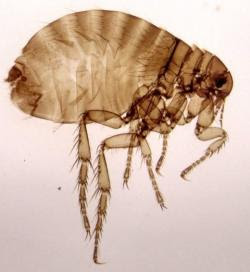In the event that a pandemic occur, the first signs and symptoms / warning signs, you must remember, so that the patient s / scored first with their doctors. And if the disease is diagnosed early and immediately began antibiotic treatment, all patients completely recovered early and thus prevent the disease from the adoption of an epidemic. The level of general awareness will increase to keep the situation under control. Some of these measures arewill be discussed later.
In the epidemic of plague, people complain of a sudden high fever / even up to 105 ° F, with marked shivering / chills, and soon, within hours or at most the next day, swollen glands are about the size of an egg in the lower abdomen, and are so painful and sensitive that the patient holds the leg in contact with the stomach to reduce the stress of the swelling. Once the leg is extended, there is a significant increase in pain in the groin.
Since Rat-flea bite is usually on the legs, groin glands are the majority of cases, where the disease is named Bubo, the bar does, or is even bubonic plague. The infection of glands in the groin area extends from near the bite, which is, let the feet / legs, the lymphatic vessels that drain these glands. However, if the flea-bite for the poor, swollen glands in the armpit, sore, and like the glands in the groin.
Since> Disease spreads rapidly and has a limited time (48-72 hours) barely in untreated cases, there is a way for people to ignore their eruption in the early stages. And if life first period of a few hours is generally ignored by the patient, this could have fatal consequences.
All this happens when the public is not aware of early signs / symptoms of the disease and the disease strikes suddenly and trigger panic.
Therefore, for these reasons, the conclusion can be drawnthat the first signs / symptoms of fever should be made known to all, and must be vigilant to keep in mind so that you saved from the tragedy of the plague, how and when an epidemic breaks out.
The early warning signs / symptoms of plague can be described as follows:
Sudden high fever with chills severe pain and tenderness in the groin / armpit, within hours, followed by the appearance of a significant tender painful swelling of glands in the groin /Armpit - suspect the presence of the plague.
In relation to the flea bites on the feet / legs / arms is so small that it is difficult to see, or was. Therefore, this does not help suspecting the disease early. The symptoms of the plague appear after an incubation period of about a week, or in severe cases, 3 to 4 days after the bite of fleas.






